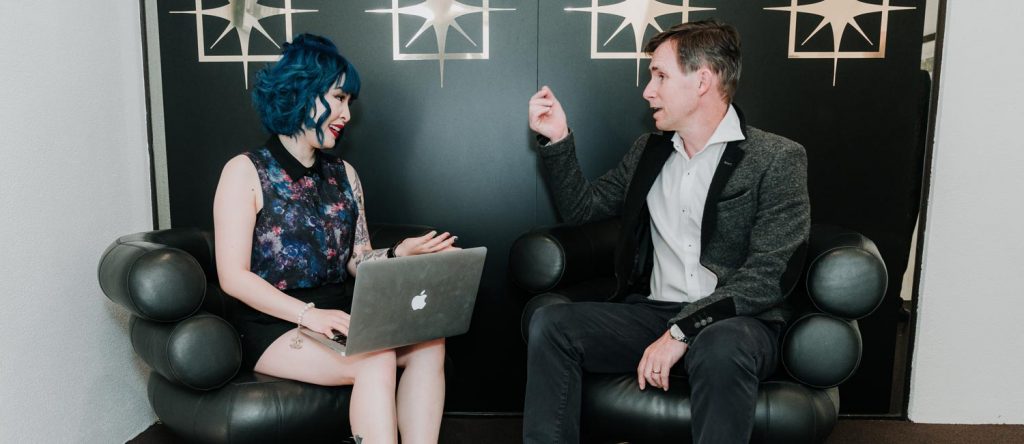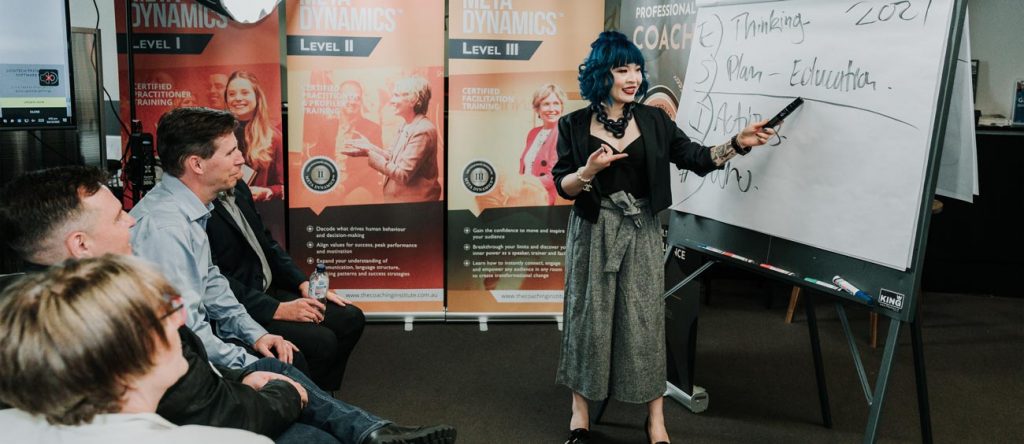Firstly, let me quickly explain some scientific researched-based results of why practice mindfulness is beneficial.
Examining results from a recent study on the effectiveness of Mindful Leadership Training with participating directors and managers at General Mills, The Institute for Mindful Leadership found these significant increases:
- 48% increase in ability to focus
- 40% Increase in personal productivity
- 34% increase in ability to prioritize
- 31% increase in employee satisfaction
- 34% increase in ability to perform under pressure
How To Practice Mindfulness

This very simple exercise is designed to help us fully be in the moment, it does not require us to meditate, rather it’s about constantly and consciously bringing ourselves out of the automatic and into awareness.
Applying this to any given moment:
- Where am I right now?
- How am I showing up right now?
- Am I present to the now?
Applying this to Emotional Reactivity:
- Am I feeling emotionally reactive right now?
- Am I being mindful of my own emotions right now?
- e.g. “Wow, that’s really firing me up right now” What’s going on for me?
- How am I showing up in this moment and is it really going to bring the best out of this moment?
- Can I help this moment by showing up a little differently?
The Mindful Pause:
- Take a mindful pause
- Get into the moment
- Notice your breathing
- Slow your breathing down
- Get conscious, tuned into, how you’re doing in this moment. Really focus on how your body is, how your breathing is, how you are.
Practice Breathing:
- Breathe in for 5
- Hold for 5
- Breathe out for 5
- Hold for 5
- Repeat 3 times

Coaching Mindfulness To Clients

TAKE A MINDFULNESS PAUSE
Sometimes you might need to take a pause during your coaching conversation because a client has become overwhelmed with the current topic of discussion.
This is where it is key to guide them through practical mindfulness exercises that will re-engage their prefrontal cortex and allow them to be able to overcome this emotional reaction.
The prefrontal cortex enables a person’s awareness, creative thinking, and inner wisdom.
The steps to follow in this exercise are:
- Ask your client to become aware of what they’re experiencing, then and there, within their body at that very moment in time
- Invite your client to sit with you and acknowledge all of those sensations
- Let them accept that the sensations are happening right now and guide them to control their breathing with you
- Let your client know that it is okay for their mind to wander or for their thoughts to be a distraction, making sure that you are doing this from a place without judgement or criticism towards them.
When 30 seconds have passed, ask them what they are experiencing and/or if they notice a shift within themselves
Invite them to feel whatever this sensation might be, and in the process to be very much aware of their breathing
This pause can take as long as you need. It could be as short as 2 minutes. This breathing technique is able to quickly render inner calm in the participant.
Once you have reached this final step with your client, ask them what it is they want to focus on with you in this session? What would have the greatest positive impact for them right now? For their current situation? For their future goals and aspirations?
This will bring the overall focus back to coaching.
Meet Each Day With The Best Of Who You Are

This exercise involves pre-work for the client to complete before each coaching session:
Ask your client to think of and describe the ideal average day for them
Talk about what your client believes will affect them achieving this ideal day
Map out how they would create their ideal day
Once we have done the pre-work, we can now work on reprogramming their subconscious mind to be more positive, to be able to map out how to “meet each day with the best of who [they] are”.
These 3 steps allow your client to be mindful, while teaching them a tool that they can use whenever they choose to, such as a daily ritual.
Invite your client to feel the impression of their feet on the floor
Ask your client to listen to the flow of their breathing after 30 seconds or so
Again, after 30 seconds of doing that, ask the client these 5 questions:
- What is most important to you?
- What isn’t serving you? Would you like to let go of that today?
- Who will you be today?
- How will you express your values today?
- How will you tap into your strengths today?
Lastly, to end this mindfulness practice, ask the client to focus on their breathing as they envision their best day yet (and how they will achieve this) through having set their intentions with you.
Thank you for reading this Positive Psychology Intervention series, if you want to know more about it, don’t hesitate to send me an enquiry.
If you haven’t watched my video about this topic, please find time to do so, and don’t forget to like and subscribe to my youtube channel.
I’ll see you next practical tips about “Savouring”.
